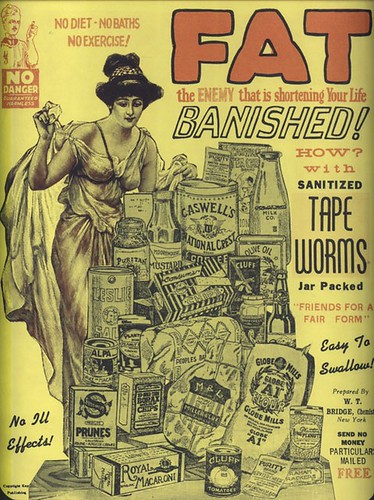
Posted on 04/25/2009 9:03:33 AM PDT by Slings and Arrows
About 14 percent of the U.S. population is infected with Toxocara, or internal roundworms, contracted from dogs and cats. That's according to the results of a Centers for Disease Control and Prevention (CDC) study announced at the American Society of Tropical Medicine and Hygiene in Philadelphia.
The CDC study shows the transmission of Toxocara from dogs and cats to people is most common in young children and youth under age 20, and more common in non-Hispanic Blacks than in Mexican Americans and non-Hispanic Whites of all age groups. It is highest in lower socioeconomic and less-educated populations. All children, however, are more susceptible to infection given their propensity to play in and sometimes eat contaminated soil.
Infections are acquired by accidental ingestion of Toxocara eggs found in environments contaminated with feces of infected dogs and cats. This includes play areas and sandboxes.
"The results of this study demonstrate that Toxocara infection in the United States is more widespread and common than previously understood," said Peter Schantz, VMD, PhD, an epidemiologist in the Division of Parasitic Diseases at the CDC and a founding board member of the Companion Animal Parasite Council (CAPC). "Although most persons infected with Toxocara have no apparent symptoms, this infectious agent is capable of causing blindness and other serious systemic illness, which makes it a public health issue."
While rare, the visual impairment most often affects children. Since toxocariasis is not a reportable infection, true numbers of cases of visual impairment and other syndromes are not known, according to Schantz.
The nonprofit CAPC was formed to educate pet owners about zoonotic disease and steps they can take to virtually eliminate the risk of pets making people sick.
"The CAPC recommends that pet owners administer year-round preventive medicines that control internal and external parasites -- such as roundworms, heartworm, fleas and ticks -- for the life of their dog or cat no matter where they live," said Michael Paul, DVM, executive director of the CAPC. "If you prevent parasitic infections in companion animals, you greatly reduce the chances of zoonotic transmission to people."
The American Animal Hospital Association, the American Association of Feline Practitioners and Schantz of the CDC all endorse the CAPC guidelines that call for year-round parasite control in companion animals to protect both pets and people from zoonotic disease. Parasite control today is simple, safe and effective. Treating dogs and cats for parasites with a monthly product is one of the easiest and most effective ways to keep pets healthy and eliminate related health risks to humans.
Despite the availability of effective treatments to prevent them, parasites -- some deadly -- remain a common fact of life for dogs and cats. Most companion animals have the potential for exposure to parasites all year long. Experts agree there is a year-round threat in all regions of the country, even those that experience below-freezing temperatures, since parasites such as fleas and ticks thrive inside homes regardless of weather conditions outdoors.
Novartis Animal Health US, Inc. funded the CDC toxocara study.
About the CAPC
The nonprofit CAPC (http://www.petsandparasites.org) is an independent council of veterinarians and other animal health care professionals established to create guidelines for the optimal control of internal and external parasites that threaten the health of pets and people. It brings together broad expertise in parasitology, internal medicine, public health, veterinary law, private practice and association leadership
About the Centers for Disease Control and Prevention
As the sentinel for the health of people in the United States and throughout the world, CDC (http://www.cdc.gov) strives to protect people's health and safety, provide reliable health information, and improve health through strong partnerships. For more information on Toxocara infection, visit.
Companion Animal Parasite Council http://www.petsandparasites.org
There wasn’t much of that going on!
“This is ripe for new regulations and taxation. There will be severe fines for those who do not worm their animals as required by law. There will be a worm tax as well.”
I believe you. I now doubts.


I believe you. I now doubts. = I believe you. I have no doubts.
(It must be the noon time heat here in Panama. I have to have an excuse don’t I? : )



Sorry....I can’t drink worm beer ;-)
is it treatable? is there a test for it?
AFAIK, yes and yes.
Your life was sort of like mine back in the fifties and sixties growing up; only I didn’t like to go barefoot - did wear sandals. I do remember getting pinworms whenever we moved to another part of the state. They were miserable little buggers. Momma gave me gentian violet tablets to get rid of them, and they were persistent.
No excuse needed... but the heat in Panama is as good as any. :-)

You are most kind. Thank you .: )
There is a saying here in Panama (in Spanish), and I am paraphrasing, had God not liked “excuses,” he would never have invented the word.
It works for me.
Our big and real threat is that cheeky Kenyan bastard. Other than that, I am not worried about anything else.
Memries,
Like the corners of my mind
Misty water-colored memories
Of the way we were
Scattered pictures,
Of the smiles we left behind
Smiles we gave to one another
For the way we were
Can it be that it was all so simple then?
Or has time re-written every line?
If we had the chance to do it all again
Tell me, would we? could we?
Memries, may be beautiful and yet
Whats too painful to remember
We simply choose to forget
So its the laughter
We will remember
Whenever we remember...
The way we were...
The way we were...
Models my give your kitty low self-esteeem. When that happens to me, I become bad cat and deflate them.




Disclaimer: Opinions posted on Free Republic are those of the individual posters and do not necessarily represent the opinion of Free Republic or its management. All materials posted herein are protected by copyright law and the exemption for fair use of copyrighted works.